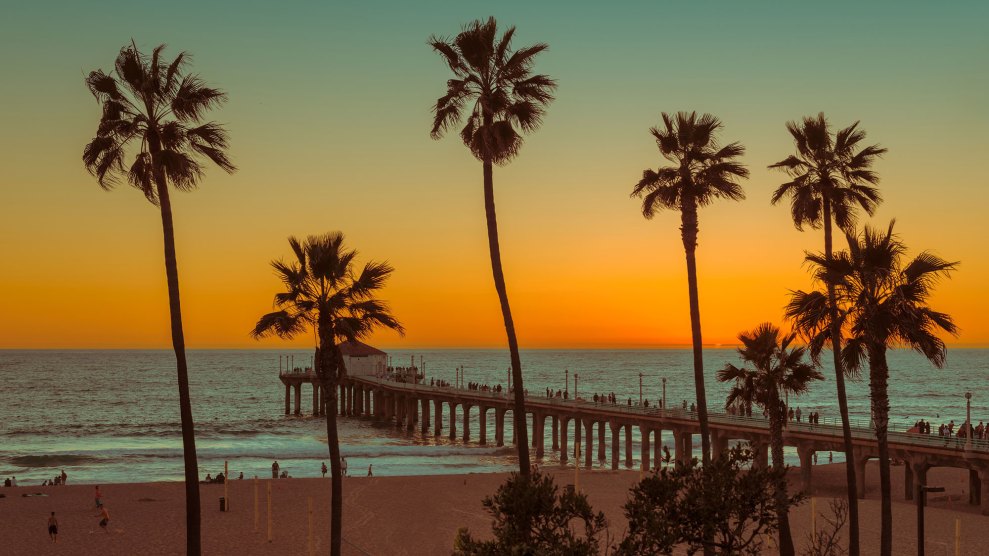
CSA Archive/Getty
California, one of America’s most deep-blue states, still has 14 increasingly vulnerable Republican members of Congress. Here are the districts the Democratic Congressional Campaign Committee considers most likely to flip based on demographics, GOP scandals, and the committee’s own polling for generic Democrat versus Republican matchups. (Also read our companion piece: “Democrats’ Quest to Win Back the House Begins in California.”)

District: CA-10, northern San Joaquin Valley
Incumbent: Jeff Denham
Vulnerabilities: Forty percent of residents are Hispanic. More than 50,000 constituents would lose insurance under Trumpcare. And Democrats have an 8,000-vote registration advantage.
Polling: Democrats (+9)

District: CA-21, Central Valley
Incumbent: David Valadao
Vulnerabilities: The district is more than 70 percent Hispanic, and more than 60,000 residents would lose insurance under Trumpcare. Democrats have a 39,000-vote registration advantage.
Polling: Democrats (+11)

District: CA-22, eastern San Joaquin Valley
Incumbent: Devin Nunes
Vulnerabilities: More than 57 percent of residents are Hispanic or nonwhite. In April, Nunes recused himself from the House Intelligence Committee’s Russia probe after the Ethics Committee announced that he “may have made unauthorized disclosures of classified information.”
Polling: Unknown. District still thought to lean slightly Republican.

District: CA-25, Ventura and northern Los Angeles counties
Incumbent: Steve Knight
Vulnerabilities: Thirty-six percent of residents are Hispanic and more than 46,000 would lose insurance under Trumpcare. Democrats have a nearly 11,000-vote registration advantage.
Polling: Democrats (+4)

District: CA-39, suburban eastern Los Angeles County
Incumbent: Ed Royce
Vulnerabilities: The district is 33 percent Latino and 29 percent Asian and is growing more liberal as children of those residents reach voting age. Republican registration is down from 45 percent in 2000 to 36 percent today, though the GOP still holds a numerical advantage. Almost 52 percent of voters backed Hillary Clinton.
Polling: Unknown

District: CA-45, Orange County
Incumbent: Mimi Walters
Vulnerabilities: More than 51 percent of constituents are nonwhite or Hispanic, and the district has seen an influx of college-educated voters. In 2016, a plurality backed Clinton.
Polling: Tied

District: CA-48, Orange County
Incumbent: Dana Rohrabacher
Vulnerabilities: He’s been described by Politico as “Putin’s favorite congressman.” More than 41 percent of the district is nonwhite or Hispanic, and it has seen an influx of college-educated voters. In 2016, a plurality backed Clinton.
Polling: Republicans (+1)

District: CA-49, northern coastal San Diego County
Incumbent: Darrell Issa
Vulnerabilities: Issa’s affluent, well-educated suburban district favored Clinton over Trump by more than 7 points. Issa was reelected by a razor-thin 0.6 percent margin.
Polling: Democrats (+9)

District: CA-50, northern and eastern suburbs of San Diego
Incumbent: Duncan Hunter
Vulnerabilities: After the Federal Election Commission and San Diego Union-Tribune began questioning his campaign finances last year, Hunter reimbursed more than $60,000 in mistaken, personal, or undocumented expenditures to his campaign.
Polling: Unknown. District still thought to lean slightly Republican.
















